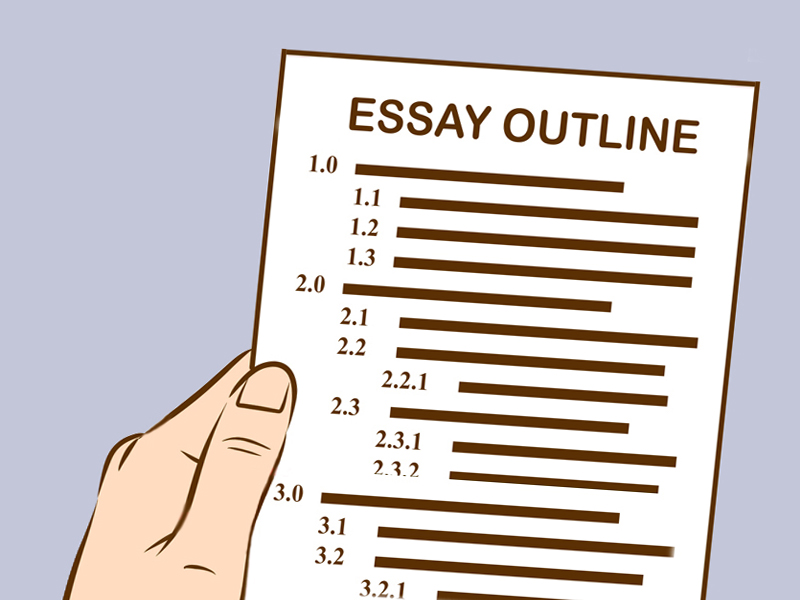How to Write an Outline
July 5, 2017| Category: Writing Tips
Planning is an important part of writing a paper. Once you have the topic, you need to think what you will write about and how you will organize your writing. Organization is essential as good ideas are worth nothing is they are scattered on the page without any logic. The reader won’t understand what you want to say and the purpose of your writing will fail. For this reason, you need to devote some time to the outline before proceeding with the essay. Check the following recommendations as to writing an outline.

1. Choose the purpose and write a thesis statement
Before writing down the ideas you plan to consider in your essay, you need to think of the aim of your writing. Are going to persuade the reader or just describe something? What do you want to achieve in the end? After you have formed the purpose, you can write it down and switch to the thesis statement. Since thesis statement is the main argument of your paper that contains all major aspects you need to cover in your piece of writing, it will help you a lot in creating the outline. Basically, it will set the limits for your research – you will know what you need to focus on in the essay.
2. Gather information
Finding sources that you are going to use in the paper is needed for several steps of the writing process. Even though you are not obliged to provide any specific details in the outline, covering the materials you will read will help you get more ideas and develop some subtopics you will have to include. Therefore, look through your potential sources, note down some important aspects/ideas/claims and do not forget to indicate page numbers to be able to find that piece of information later.
3. Choose the type
After you have created the thesis statement, determined your goal and selected the supporting materials, you can switch to the outline itself. First of all, you should select its type. There are two types of outlines:
- topic outline
- sentence outline
A topic outline is formed with the short phrases that constitute every point in it. In other words, you provide several words that express the idea of the selected section.
A sentence outline is often used if you need to provide many specific details and giving them in short phrases will take much space and confuse the reader. In such cases, expressing the main focus of the passage with the help of complete sentences will be helpful.
4. Ordering subtopics
At this stage, you may switch to writing the outline. To do that, you need to order your subtopics so that the sequence made sense. Every paragraph/part of your essay or research paper will focus on some idea. This main idea can serve as a subtopic. Make sure you structure the ideas in chronological order (if it is a history paper) or in the sequence that makes the development of the ideas logical and gradual. You need to avoid abrupt ending of one paragraph and start of another one without any contextual transition. After you have ordered the subtopics, mark them with Roman numerals.
5. Expanding the subtopics
Every subtopic should have at least two constituents (or sub-points). The sub-points divide the major focus of the paragraph into smaller ideas that together will explain its main argument. Sub-points should be marked with indentation and letters of English alphabet (capital ones). Every subtopic can have as many sub-points as you need. If you are writing something big and your subtopics are the names of the sections that your paper will have, then you will probably provide more sub-points that you would use in small papers.
6. Expanding the sub-points
If that is necessary, you can expand your sub-points the same way as you expand subtopics. That is frequently applied for big papers or those that have many details. In order to mark the third level of your outline, you need to use indentation and Arabic numerals. This division is not obligatory. It is your decision whether to make it or not. If you think it will help you in the writing process, do it then.
After you have done all steps described above, you need to reread the outline and fix it if that is needed. When you have it done, you do not need to worry about paper structure as you have already structured it. Just adhere to the plan you created and your piece of writing will be logical, effective and well-organized.
